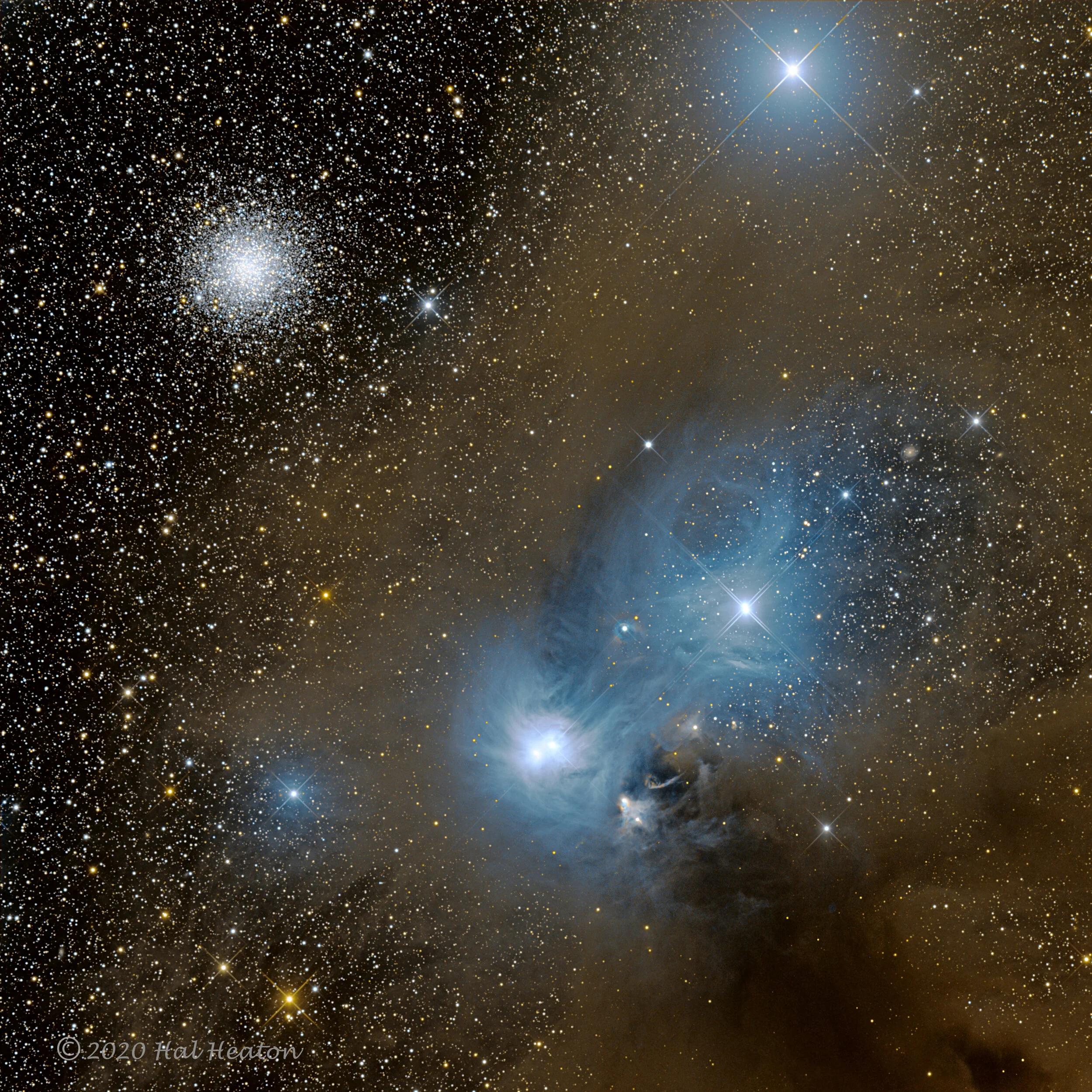
AAPOD2 Image Archives
Sort 2025 By Month: January | February | March | April | May | June | July | August | September | October | November | December
The Eclectic NGC 6726 Region of Corona Australis
Image Description and Details :
Just below the teapot of Sagittarius in Corona Australis lies a strikingly-beautiful region containing several objects of widely differing ages and distances. Exquisite blue reflection nebulae (NGC 6726/27), lit by the embedded bright stars TY CrA and HD 176386, and IC 4812 (HD 176269 and 176270) appear to be connected by wispy blue filaments that span the dust lane SL-41. Nearly 200 lys closer than those stars, the wing-shaped nebula (NGC 6729) below those filaments is energized by the 310 ly distant R CrA. Closer still is the bright blue eclipsing binary star at the upper right, epsilon CrA, at 102 lys, which along with the far more distant globular cluster NGC 6723 span the "depth" of this 53-arcmin x 53-arcmin scene. The image was made using ten minute guided exposures taken through red, green and blue filters by an unbinned FLI ProLine 16803 camera mounted on Chilescope’s 0.5-m Telescope 2, which were stacked for 1-hr; north is left, and east is down.
Copyright Information: Hal Heaton
The Enchanting Cometary Globule CG4 in Puppis
Image Description and Details :
More than 30 cometary globules (CG) have been found in the Gum Nebula since the late 1970’s that generally have dense, dusty heads and long faint tails pointing away from the center of the Vela OB2 association. The intricate structure evident in this Ha-enhanced RGB image of CG4, render it as one of the most striking examples. The serendipitous appearance of the nearly edge-on background galaxy ESO 257 – G019 (PGC 21338) pointing to a tight circlet of stars about 9-arcmin above the center of the globule’s head adds to the drama of the image, as does the presence of the bright star-forming cloud Sa 101 beneath the globule’s tail. Located in Puppis approximately 1300 lys away, the head of CG4 spans nearly 2.9 lys at its greatest projected width on the sky. East is up and north is to the right on this image whose slightly cropped square-degree field-of-view spans 23.3 lys on a side at the assumed distance.
The data used to make this image were obtained by an FLI Proline 16803 CCD camera on Chilescope’s 0.5-m Telescope 2 (f/3.8) on the nights of March 30th and April 26th of 2019. A series of 10-min long unbinned exposures were taken through red, green, blue and H-alpha filters that were integrated for 40, 50, 50 and 50-mins, respectively, over the 65 x 65 arcmin2 field-of-view. Subsequent processing, which included preparation of a synthetic Luminance frame, was performed using CCDStack v.2 and Photoshop CC 2018.
Copyright Information: Hal Heaton



